Candlebox by Candlebox
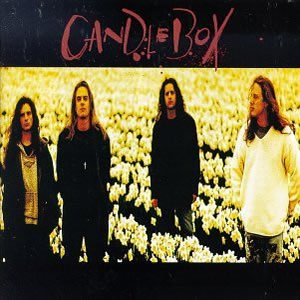 Candlebox was one of the last riders of the huge Seattle grunge wave of the early 1990s. Consequently, they were at the vanguard of the post-grunge wave, where this newly labeled “alternative” music was becoming less and less alternative. Their debut album Candlebox came in mid 1993, a couple of years after many of their Seattle contemporaries made an international splash with this fresh new sound. Further, the commercial success of the album took a while to materialize, as the album did not enter the Billboard 200 until over a year following its release, although it did remain on that chart for two subsequent years.
Candlebox was one of the last riders of the huge Seattle grunge wave of the early 1990s. Consequently, they were at the vanguard of the post-grunge wave, where this newly labeled “alternative” music was becoming less and less alternative. Their debut album Candlebox came in mid 1993, a couple of years after many of their Seattle contemporaries made an international splash with this fresh new sound. Further, the commercial success of the album took a while to materialize, as the album did not enter the Billboard 200 until over a year following its release, although it did remain on that chart for two subsequent years.
The four-piece band was formed in late 1991 and took their name from a line in a Midnight Oil song. Their rise to fame was quite rapid as a demo tape found its way to Madonna’s Maverick label and the group landed a record deal in 1992. In their early career, Candlebox was occasionally looked down upon by members of the grunge movement who criticized their style which leaned more towards classic rock then the punk and indie sound of other bands in the genre. Nevertheless, the band worked and played hard until they got their big break.
We start our look at 1993 with this album because it is an example of where 1993 was on the rock timeline – in a phrase, it was when alternative rock stopped being alternative. Candlebox is the perfect representation as they had one of the greatest songs of the decade but it was the only truly complete song on the album, as the rest just seem to be reaching for the gold ring but falling just a bit frustratingly short.
 Candlebox by Candlebox |
|
|---|---|
| Released: July 20, 1993 (Warner Brothers) Produced by: Kelly Gray & Candlebox Recorded: London Bridge Studios, Seattle, March–April 1993 |
|
| Track Listing | Band Musicians |
| Don’t You Change You No Sense Far Behind Blossom Arrow Rain Mother’s Dream Cover Me He Calls Home |
Kevin Martin – Lead Vocals Peter Klett – Guitars Bardi Martin – Bass Scott Mercado – Drums |
A little nervous laughter (intentional or not) starts the album before the song “Don’t You” breaks in with a Pearl Jam–like-jam, riff-driven hard rock with simple and steady drumming and some boilerplate vocal effects. “Change” is a distant and moody song with picked out, reverb-drenched guitar notes by Peter Klett, before it breaks into a strong part during the choruses. Like many of the alternative albums of the day, this song employs a tactic in use since “Babe I’m Gonna Leave You” on Led Zeppelin I in 1969, of letting the dynamics be extra-dynamic by sheer use of contrast.
Deadened guitar notes introduce the rotating shuffle of “You”, a minor radio hit for the band. The song’s best moment is the sustained-notes guitar lead by Klett towards the end, preceded by an an almost rap-like lyrical rhythm and choppy drumming by Scott Mercado. On the next track, “No Sense”, Mercado adds some Boss-Nova style drums accompanied by some interesting guitar and bass interplay before it unfortunately launches into typical grunge orgasm, which is quite a shame for this good beginning showed promise before it gets formulaic.
“Far Behind” is, quite simply one of the greatest songs of the decade of the 1990s, led by incredible vocal intensity by lead vocalist Kevin Martin. Everything comes together on this song, from the crisp opening riff and fantastic middle lead by by Klett to the incredible climax after in the final minute mark of this song. The song was actually recorded in April 1992, four months after the band’s formation, for their original demo tape and it peaked at #18 on the U.S. charts in 1994. The song is a tribute to the late Andrew Wood, lead vocalist of Mother Love Bone, the band which sparked much of the grunge movement.
“Blossom” is slow and methodical with good bass accents by Bardi Martin, again breaking into grunge formula, but strong enough to remain one of the better songs on the album. The next two songs are not quite there, just thrashing for the sake of thrash as the formula and becomes more of an unfocused distraction than a true sonic reward. Kevin Martin has an adequate voice, but not quite the soaring mystical kind necessary to pull off the heavier moody stuff which requires much range (see Pearl Jam’s Eddie Vedder). The most unfortunate production faux pas is “Rain”, cool and bluesy from the start with the band doing an adequate job pulling it off before the song abruptly stops about halfway through and breaks into a funk/grunge section which was totally unnecessary for this song.
The album does recover a bit with the final two, acoustic driven tracks. “Cover Me” is a refreshing slow ballad with great strumming and picking by Klett. “He Calls Home” concludes the album as a bit of melodramatic ballad about a homeless man, carried by mainly by the vocals of Kevin Martin.
Candlebox had success both critically and commercially and the band was eager to follow up on the success, But by the time the band released the follow-up record, Lucy in October 1995, the rock landscape was already changing again and they never quite surpassed the success of their debut.
~
Part of Classic Rock Review’s celebration of 1993 albums.

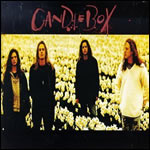

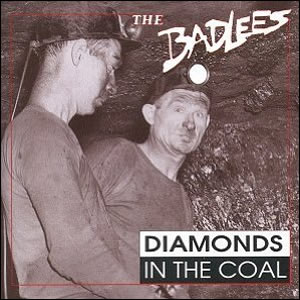
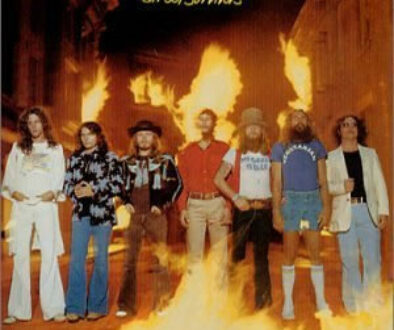
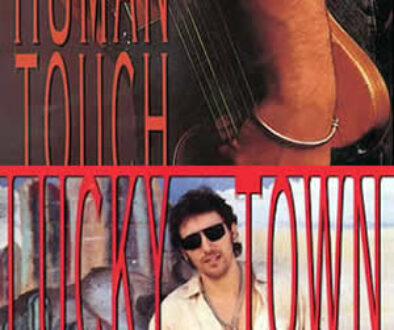
Disappearing In Airports by Candlebox | Modern Rock Review
May 23, 2016 @ 9:50 am
[…] scene was catching fire. Within two years, the group had a major label deal and released their self-titled debut album, which was their most commercially successful record. Later in the decade, the group released two […]
February 12, 2019 @ 10:06 am
I saw these guys in 2010, and their set list included every song off the first album save for mother’s dream and he calls home, and that was it, and I couldn’t have been happier. I feel like they got unfairly lumped into the grunge movement because they were from Seattle, but if you really listen to that 1st album it’s just straight forward blues-based rock and roll. And in that context this album is stellar. They cultivated a huge following on the strength of it. Those fans have remained loyal, as evidenced by the fact that the 2010 show I saw in Wichita KS sold out a 3000 seat venue.
March 30, 2023 @ 12:49 am
This has to be on the Mt. Rushmore of
worst, horrible, inaccurate record reviews I’ve ever read. I’m ashamed that I even read this.
March 18, 2024 @ 12:35 pm
My mom loved these guys a lot back in the 90’s when they first broke through, she used to have this album on CD but got stolen and she was super devastated because that was the only sort of grunge band she actually liked, she got me into these guys. My personally opinion is that I have to say this album is probably one of my favorite albums of all time in this kind of grunge scene, I wouldn’t even call them grunge but yes indeed they are alternative which makes it better and peter Klett is hands down one of the best up there in the guitar playing realm. I love listening to all the songs, my top 5 songs are No sense, mothers dream, arrow, don’t you, and far behind. But I honestly got to say this is the worst record review ever.